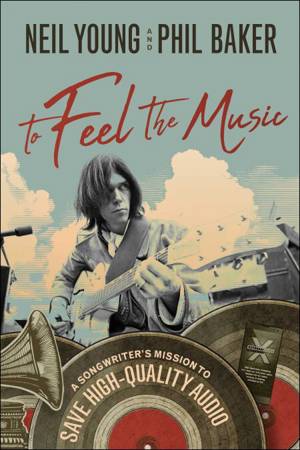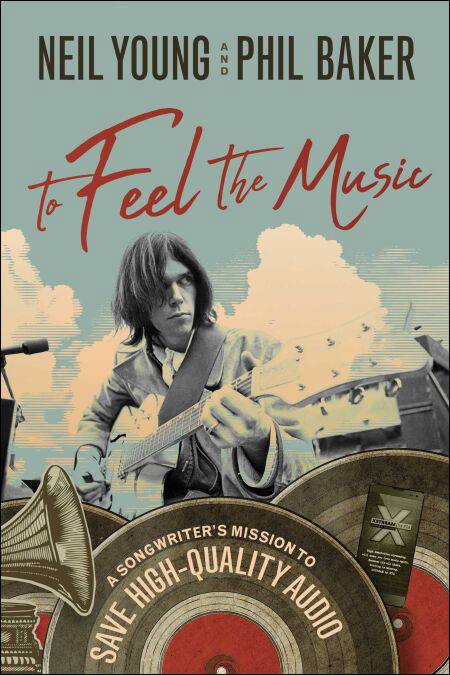
- Afhalen na 1 uur in een winkel met voorraad
- Gratis thuislevering in België vanaf € 30
- Ruim aanbod met 7 miljoen producten
- Afhalen na 1 uur in een winkel met voorraad
- Gratis thuislevering in België vanaf € 30
- Ruim aanbod met 7 miljoen producten
Zoeken
To Feel the Music E-BOOK
A Songwriter's Mission to Save High-Quality Audio
Neil Young, Phil Baker
E-book | Engels
€ 11,17
+ 11 punten
Uitvoering
Omschrijving
Neil Young took on the music industry so that fans could hear his music—all music—the way it was meant to be heard.
Today, most of the music we hear is com-pressed to a fraction of its original sound,while analog masterpieces are turning to dustin record company vaults. As these record-ings disappear, music fans aren't just losing acollection of notes. We're losing spaciousness,breadth of the sound field, and the ability tohear and feel a ping of a triangle or a pluckof a guitar string, each with its own reso-nance and harmonics that slowly trail off intosilence.
The result is music that is robbed of its original quality—muddy and flat in sound compared to the rich, warm sound artists hear in the studio. It doesn't have to be this way, but the record and technology companies have incorrectly assumed that most listeners are satisfied with these low-quality tracks.
Neil Young is challenging the assault on audio quality—and working to free music lovers from the flat and lifeless status quo.
To Feel the Music is the true story of his questto bring high-quality audio back to musiclovers—the most important undertaking ofhis career. It's an unprecedented look insidethe successes and setbacks of creating thePono player, the fights and negotiationswith record companies to preserve master-pieces for the future, and Neil's unrelentingdetermination to make musical art availableto everyone. It's a story that shows how muchmore there is to music than meets the ear.
Neil's efforts to bring quality audio to his fans garnered media attention when his Kickstarter campaign for his Pono player—a revolutionary music player that would combine the highest quality possible with the portability, simplicity and affordability modern listeners crave—became the third-most successful Kickstarter campaign in the website's history. It had raised more than $6M in pledges in 40 days. Encouraged by the enthusiastic response, Neil still had a long road ahead, and his Pono music player would not have the commercial success he'd imagined. But he remained committed to his mission, and faced with the rise of streaming services that used even lower quality audio, he was determined to rise to the challenge.
An eye-opening read for all fans of Neil Young and all fans of great music, as well as readers interesting in going behind the scenes of product creation, To Feel the Music has an inspiring story at its heart: One determined artist with a groundbreaking vision and the absolute refusal to give up, despite setbacks, naysayers, and skeptics.
Today, most of the music we hear is com-pressed to a fraction of its original sound,while analog masterpieces are turning to dustin record company vaults. As these record-ings disappear, music fans aren't just losing acollection of notes. We're losing spaciousness,breadth of the sound field, and the ability tohear and feel a ping of a triangle or a pluckof a guitar string, each with its own reso-nance and harmonics that slowly trail off intosilence.
The result is music that is robbed of its original quality—muddy and flat in sound compared to the rich, warm sound artists hear in the studio. It doesn't have to be this way, but the record and technology companies have incorrectly assumed that most listeners are satisfied with these low-quality tracks.
Neil Young is challenging the assault on audio quality—and working to free music lovers from the flat and lifeless status quo.
To Feel the Music is the true story of his questto bring high-quality audio back to musiclovers—the most important undertaking ofhis career. It's an unprecedented look insidethe successes and setbacks of creating thePono player, the fights and negotiationswith record companies to preserve master-pieces for the future, and Neil's unrelentingdetermination to make musical art availableto everyone. It's a story that shows how muchmore there is to music than meets the ear.
Neil's efforts to bring quality audio to his fans garnered media attention when his Kickstarter campaign for his Pono player—a revolutionary music player that would combine the highest quality possible with the portability, simplicity and affordability modern listeners crave—became the third-most successful Kickstarter campaign in the website's history. It had raised more than $6M in pledges in 40 days. Encouraged by the enthusiastic response, Neil still had a long road ahead, and his Pono music player would not have the commercial success he'd imagined. But he remained committed to his mission, and faced with the rise of streaming services that used even lower quality audio, he was determined to rise to the challenge.
An eye-opening read for all fans of Neil Young and all fans of great music, as well as readers interesting in going behind the scenes of product creation, To Feel the Music has an inspiring story at its heart: One determined artist with a groundbreaking vision and the absolute refusal to give up, despite setbacks, naysayers, and skeptics.
Specificaties
Betrokkenen
- Auteur(s):
- Uitgeverij:
Inhoud
- Aantal bladzijden:
- 272
- Taal:
- Engels
Eigenschappen
- Productcode (EAN):
- 9781948836630
- Verschijningsdatum:
- 9/09/2019
- Uitvoering:
- E-book
- Beveiligd met:
- Adobe DRM
- Formaat:
- ePub

Alleen bij Standaard Boekhandel
+ 11 punten op je klantenkaart van Standaard Boekhandel
Beoordelingen
We publiceren alleen reviews die voldoen aan de voorwaarden voor reviews. Bekijk onze voorwaarden voor reviews.











